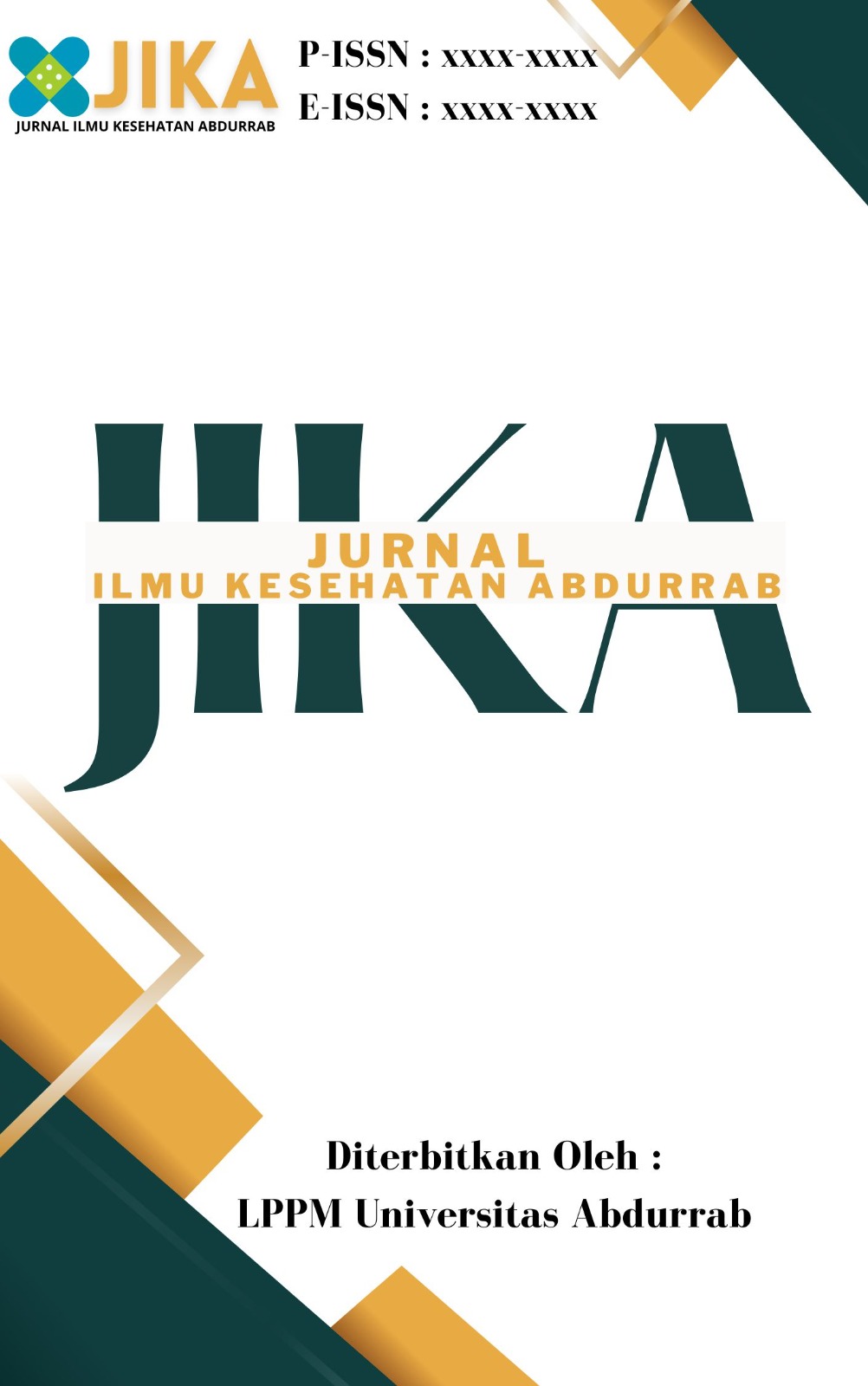ANTIBACTERIAL ACTIVITY ASSAY FROM EXTRACT OF MATOA LEAVES (Pometia pinnata J.R. Forst. & G. Forst)
Keywords:
Matoa leaves, antibacterial, gram , gram -Abstract
Matoa (Pometia pinnata J.R. Forst. & G. Forst) can be used as traditional medicine. The plant contains secondary metabolite compounds such as flavonoids, tannins, terpenoids and saponins that have the ability to inhibit the mechanism of action of bacteria. The purpose of this study was to determine the antibacterial activity of n-hexane, ethyl acetate and ethanol extracts of Matoa leaves against gram-positive bacteria Staphylococcus aureus and Streptococcus mutans and gram-negative bacteria Escherichia coli and Klebsiella pneumonia at concentrations of 70, 50, 30 and 10% using the disc diffusion method, Ciprofloxacin as a positive control and DMSO as a negative control. Statistical test results on 70% concentration of ethyl acetate extract showed average results on the inhibition diameter of Staphylococcus aureus, Streptococcus mutans, Eschericia coli and Klebsiella pneumenia were 10.63, 13.43, 11.23, and 13.26 mm, respectively. Based on the results of this study, it can be concluded that the n-hexane, ethyl acetate and ethanol extracts of Matoa Leaf (Pometia pinnata J.R. Forst. & G. Forst) have the ability to inhibit the growth of gram-positive bacteria Staphylococcus aureus and Streptococcus mutans and gram negative bacteria Escherichia coli and Klebsiella pneumonia, but in the n-hexane extract of matoa leaves is not able to inhibit the growth of Staphylococcus aureus.
Downloads
Downloads
Published
How to Cite
Issue
Section
License
Please find the rights and licenses in Jurnal Ilmu Kesehatan Abdurrab. By submitting the article/manuscript of the article, the author(s) accept this policy.
1. License
The non-commercial use of the article will be governed by the Creative Commons Attribution license as currently displayed on Creative Commons Attribution-NonCommercial-ShareAlike 4.0 International License.
2. Author’s Warranties
The author warrants that the article is original, written by stated author(s), has not been published before, contains no unlawful statements, does not infringe the rights of others, is subject to copyright that is vested exclusively in the author and free of any third party rights, and that any necessary written permissions to quote from other sources have been obtained by the author(s).
3. User Rights
Jurnal Ilmu Kesehatan Abdurrab spirit is to disseminate articles published are as free as possible. Under the Creative Commons license, Jurnal Ilmu Kesehatan Abdurrab permits users to copy, distribute, display, and perform the work for non-commercial purposes only. Users will also need to attribute authors and Jurnal Ilmu Kesehatan Abdurrab on distributing works in the journal.
4. Rights of Authors
Authors retain all their rights to the published works, such as (but not limited to) the following rights;
- Copyright and other proprietary rights relating to the article, such as patent rights,
- The right to use the substance of the article in own future works, including lectures and books,
- The right to reproduce the article for own purposes,
- The right to self-archive the article,
- The right to enter into separate, additional contractual arrangements for the non-exclusive distribution of the article's published version (e.g., post it to an institutional repository or publish it in a book), with an acknowledgment of its initial publication in this journal (Jurnal Ilmu Kesehatan Abdurrab).
5. Co-Authorship
If the article was jointly prepared by other authors, any authors submitting the manuscript warrants that he/she has been authorized by all co-authors to be agreed on this copyright and license notice (agreement) on their behalf, and agrees to inform his/her co-authors of the terms of this policy. Jurnal Ilmu Kesehatan Abdurrab will not be held liable for anything that may arise due to the author(s) internal dispute. Jurnal Ilmu Kesehatan Abdurrab will only communicate with the corresponding author.
6. Royalties
This agreement entitles the author to no royalties or other fees. To such extent as legally permissible, the author waives his or her right to collect royalties relative to the article in respect of any use of the article by Jurnal Ilmu Kesehatan Abdurrab.
7. Miscellaneous
Jurnal Ilmu Kesehatan Abdurrab will publish the article (or have it published) in the journal if the article’s editorial process is successfully completed. Jurnal Ilmu Kesehatan Abdurrab's editors may modify the article to a style of punctuation, spelling, capitalization, referencing and usage that deems appropriate. The author acknowledges that the article may be published so that it will be publicly accessible and such access will be free of charge for the readers as mentioned in point 3.







